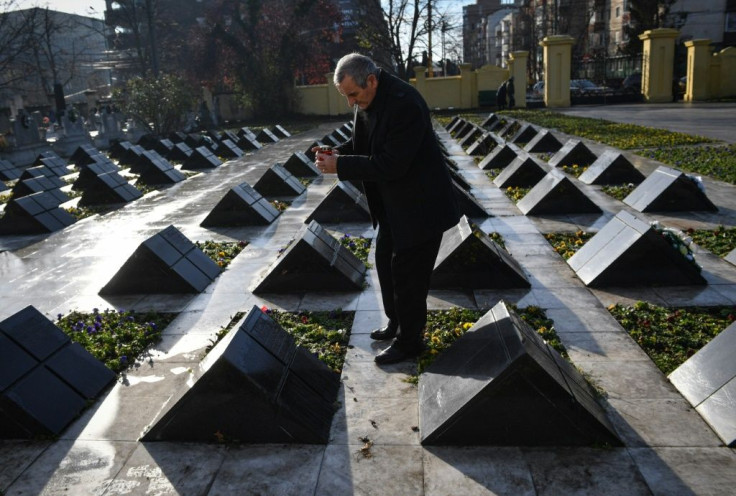Misinformation From The Archives: Timisoara's 'Mass Graves'

Naked bodies lined up in the mud in a cemetery in Romania: the city of Timisoara, crucible of the anti-communist revolution in 1989, is also remembered for one of the most infamous examples of misinformation in the modern era.
Just before Christmas of that year, grisly scenes from Timisoara were beamed around the world by foreign correspondents descending on Romania.
A wave of protests had just led to dictator Nicolae Ceausescu being taken into custody and for the first time in decades the country was open to the outside world.
In the western city of Timisoara, the foreign press reported on naked corpses -- some of them mutilated -- laid out next to each other in the mud in the city's paupers' cemetery.
The killings were quickly attributed to the feared Securitate secret police.
The bodies were seen as a symbol of the Romanian revolution, which left roughly 1,000 people dead across the country, about 100 of them in Timisoara.
At the time, international journalists repeated inflated death tolls of more than 4,000, as well as claims of multiple mass graves.
But by late January 1990 it had become clear Timisoara's "mass graves" were fake and that the bodies in the images were of people who died before the protests and had been disinterred.
The question was: were the images the result of a staged attempt to bring the Ceausescu regime into further disrepute or was it down to desperate Romanians digging up graves while trying to find their missing relatives?
Romeo Balan, who was a prosecutor in Timisoara at the time, thinks the latter is more likely.
But the fact that bodies were nothing to do with the uprising did get not through to people, Balan tells AFP.
"It didn't help, people kept digging in other areas," he says.
"People didn't know where their dead relatives were, they were looking anywhere there could have been a mass grave," recalls Timisoara resident Ioan Banciu.
His wife Leontina had been wounded during a protest in the city on December 17 and she died in his arms on the way to hospital.
But when he returned to retrieve her body, it had disappeared.
Two weeks later Banciu found out that around 40 bodies, including his wife, had been taken from the morgue and incinerated in the capital Bucharest -- an attempt to cover up the extent of the casualties. That story was verified.
But on the "mass grave" story, the prevailing atmosphere of confusion and panic meant reporters "jumped on the bandwagon of rumours", says Michel Castex, who covered the revolution for AFP.
An AFP dispatch datelined from Timisoara on December 24, 1989, described the bodies in the cemetery, with Romanians quoted as blaming the deaths on "Securitate fanatics" and talking of "senseless mutilations".
"The Romanian revolution was also an act of collective imagining, and people were expecting these sorts of images because Ceausescu was such a bloody dictator," says historian and media expert Christian Delporte.
"When you want to believe something, you will find any reason to believe it and the grotesque nature of the Ceausescus added to the sense that anything was possible," says Castex.
On December 29, AFP was reporting that the climate of uncertainty meant that reported national death tolls as high as 70,000 were almost certainly false.
The fake "mass grave" story was only debunked in late January.
Added to the thirst for a scoop and pressure from the competition, all the ingredients were in place for what Reporters Without Borders has called "one of the biggest deceptions in modern media history," dealing serious damage to media credibility.
"It was the first time that we had images coming direct from a revolution in Europe and that scene was taken as proof," despite the lack of context, says Christian Delporte.
Despite the current concerns around the world about misinformation and fake news online, Delporte says that in some ways modern media can help combat this sort of phenomenon.
"Today some people are much more careful with this constant stream of images," he says.
"In the era of social media, one can imagine that there would have quickly been some fact-checking (of such claims)."
© Copyright AFP 2024. All rights reserved.





















